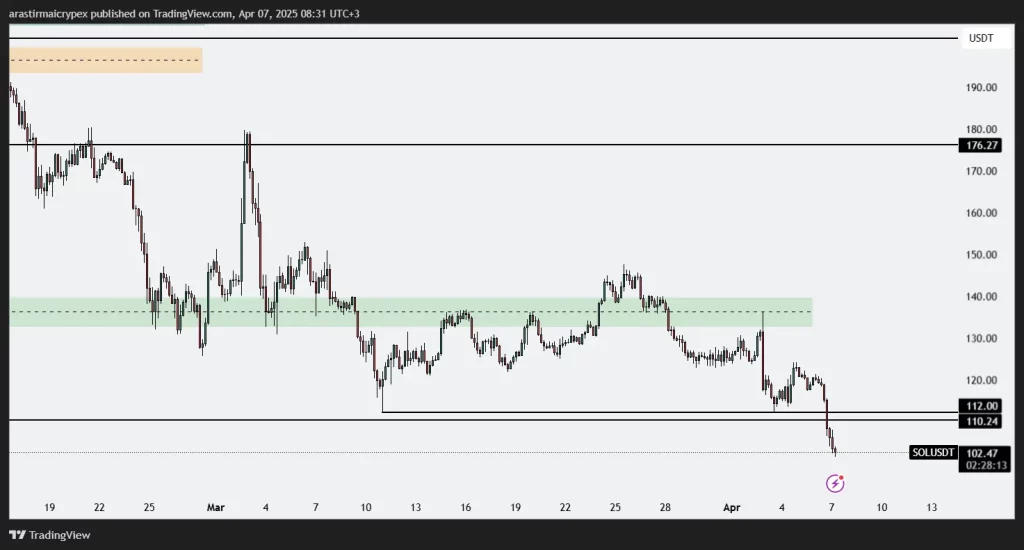SEC Says Some Stablecoins Are Not Securities
The US Securities and Exchange Commission (SEC) announced in a new statement that certain dollar-based stablecoins will not be considered securities. The SEC stated that stablecoins, which are used only for payment, money transfer and storage of value, are backed one-to-one by high-quality liquid assets and can be converted into dollars at any time, are not subject to securities laws. This statement, along with previous similar statements on memecoins and PoW mining, is considered part of the SEC’s crypto-friendly approach.
However, it is stated that Tether (USDT) may be excluded from this definition. Because Tether reserves include precious metals and other crypto assets, and the instant redemption guarantee is not clear. Circle President Heath Tarbert referred to his competitors by stating that transparent stablecoins like USDC will benefit from this clarity. On the other hand, both the House of Representatives and the Senate are advancing bills on stablecoin regulations in Congress. It is expected that there will be more policy changes in this transformation process of the SEC with the new Trump-backed presidential candidate Paul Atkins taking office.
Tether Plans to Issue a New Stablecoin if USDT is Banned in the US
Tether CEO Paolo Ardoino stated that USDT could be banned in the country due to stablecoin laws expected to be enacted in the US, but that this is not a big problem for the company. Ardoino said that in this case, they could issue a new stablecoin based in the US and compliant with local laws. He also said, “USDT is ideal for emerging markets. We can design a different payment-focused stablecoin suitable for the US.”
While current bills require foreign stablecoin issuers to undergo strict audits, Tether has not undergone a full-scale financial audit to date. Despite this, Ardoino noted that Tether is one of the companies that cooperates most with law enforcement and that talks with major auditing firms are ongoing. The company is also investing in local stablecoin projects in Europe that are similarly compliant with new regulations. Ardoino sees a scenario where USDT could be withdrawn from the US and European markets in the long term as a possibility.
SEC Reviewing All Warnings About Crypto Risks
The interim chairman of the US Securities and Exchange Commission (SEC), Mark T. Uyeda, has ordered a review of previously published staff disclosures on crypto assets. The documents under review include a 2019 detailed guide on how to evaluate digital assets with the Howey test, a 2021 warning on Bitcoin futures, and risk disclosures made after the 2022 crypto crashes. This step was taken under Executive Order 14192, which aims to “pave the way for prosperity through regulation.”
Uyeda stated that the documents in question should now be brought into line with the SEC’s current priorities or removed entirely. It is noteworthy that these documents have been updated following the SEC’s important steps in recent years, such as excluding memecoins from securities laws and approving spot ETFs. On the other hand, according to Reuters, the SEC is also experiencing serious staff losses, with more than 600 personnel participating in the voluntary separation program.
Bitcoin Proposes Hard Fork Against Quantum Computers
Developer Agustin Cruz has proposed a hard fork that would require all users to move their assets to wallets secured with post-quantum cryptography in order to protect against potential threats from quantum computers on the Bitcoin network. The draft proposal, titled “Quantum-Resistant Address Migration Protocol (QRAMP),” foresees that transactions from addresses using classical ECDSA signatures will be rejected after a certain block height.
This change may be the most radical cryptographic update in Bitcoin’s history, but it is expected to create serious debate in the community because it requires a hard fork. Although the proposal is presented as a preventive step against quantum threats, it is emphasized that quantum computers do not yet pose a direct threat to BTC. Still, developments such as the “Majorana 1” processor with a capacity of millions of qubits that Microsoft introduced last month bring such measures to the agenda.
PayPal and Venmo Are Getting Solana and Chainlink Support
PayPal and Venmo users will be able to buy, sell, store and transfer Solana (SOL) and Chainlink (LINK) via the platforms in the coming weeks. The company stated that this step was taken in response to demands from crypto users and reflects their commitment to the digital asset space.
PayPal, which launched Bitcoin and Ethereum support in 2020, launched the PYUSD stablecoin and supported it on Ethereum and Solana. PayPal is also constantly increasing its presence in the crypto space with expansions such as MoonPay integration, ENS support, and crypto features for business accounts. The company aims to have 20 million businesses using PYUSD by the end of 2025.
Bitcoin Becomes a Safe Haven Against Geopolitical Risks
According to Standard Chartered analysts, Bitcoin is becoming not only a growth-oriented investment vehicle, but also an economic hedge against geopolitical risks, differentiating itself from technology stocks. While major tech companies, known as MAG7, have experienced steep declines, Bitcoin and Microsoft have been more resilient to these declines.
According to Geoffrey Kendrick, the bank’s head of digital asset research, BTC serves as a hedge against “traditional finance (TradFi)” risks during times of structural stress in traditional markets, such as the collapse of Silicon Valley Bank. It is also noted that Bitcoin is now being used as a “geopolitical hedge” against the risks of global isolation and dedollarization of the US. Technically, it is predicted that BTC could exceed the $85,000 level and rise again to $88,500.
GameStop CEO Bought $10.7 Million in Shares
GameStop CEO Ryan Cohen demonstrated his confidence in the company by purchasing 500,000 GME shares shortly after the company announced that it would invest in Bitcoin. This $10.7 million purchase increased Cohen’s stake in the company to 8.4%.
The company’s shares rose by more than 11% following this news, while GameStop also plans to purchase Bitcoin with a $1.3 billion fund. This move, which comes amid falling sales and store closures, is seen as part of the company’s new strategic direction.
———————————————————————————————
BITCOIN (BTC)
BTC is trading at $77,000 as of the morning hours, down 1.72%. Bitcoin retreated to the level of 77,279 after losing the 79,989 support. Reaction purchases may be observed as the price declines to this critical region, but 79,989 will now act as a strong resistance above. As long as it remains below this level, the downtrend is likely to continue. The next support level below can be monitored as 76.606. The general view is that the pressure continues in the short term.
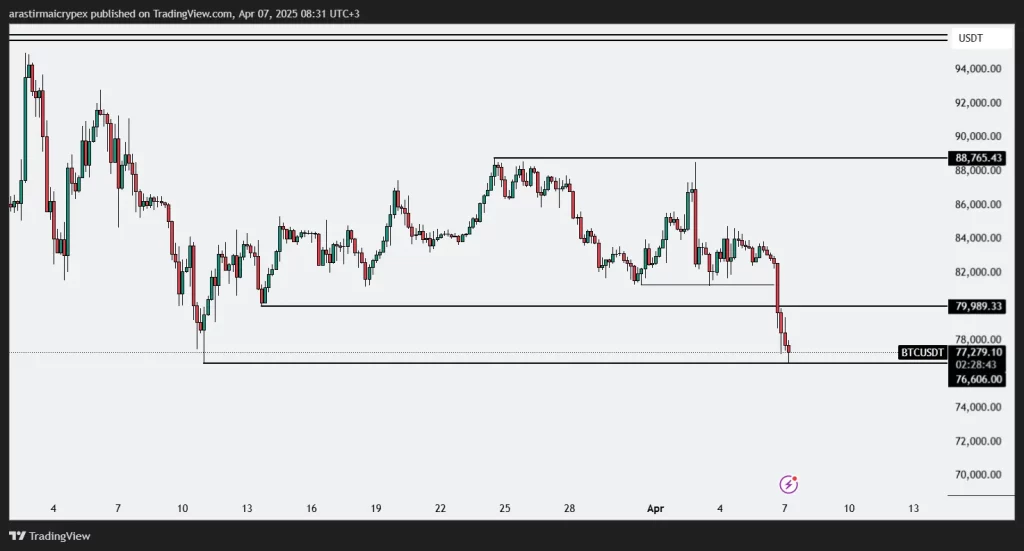
ETHEREUM (ETH)
ETH is priced at $ 1546 as of the morning hours with a 2.15% loss in value. After the 1,768 support was broken on the Ethereum side, sales intensified and the price dropped to the demand zone at 1,550. Since this region has been an area where buyers have stepped in strongly in the past, a short-term reaction purchase may be seen. However, considering the depth of the decline, the 1,768 level must be regained for this reaction to be permanent. Otherwise, the price may retreat to the 1,500 band.
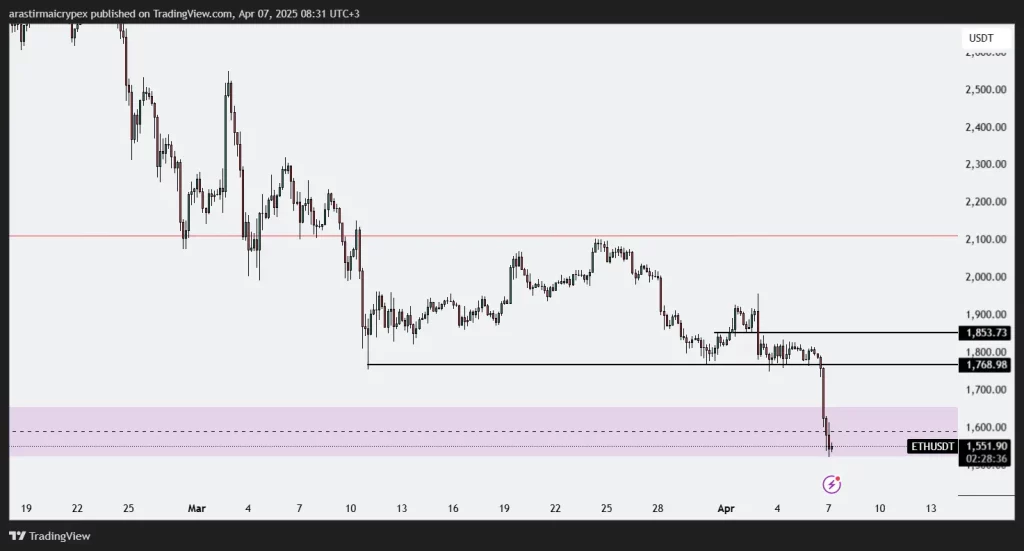
RIPPLE (XRP)
XRP is trading at $ 1.7853 as of the morning hours, losing 7.05%. The XRP price lost value rapidly with the sales from the horizontal resistance zone in the 2.40-2.60 band and fell to the 1.90 support zone. This zone was previously important in terms of being an area where buyers stepped in, but with the last break, this place was also passed downwards. Selling pressure may continue as long as it remains below the 1.90 level. In this case, the 1.70 level may be the new target. Above, the 1.90 level will be followed as the first resistance.
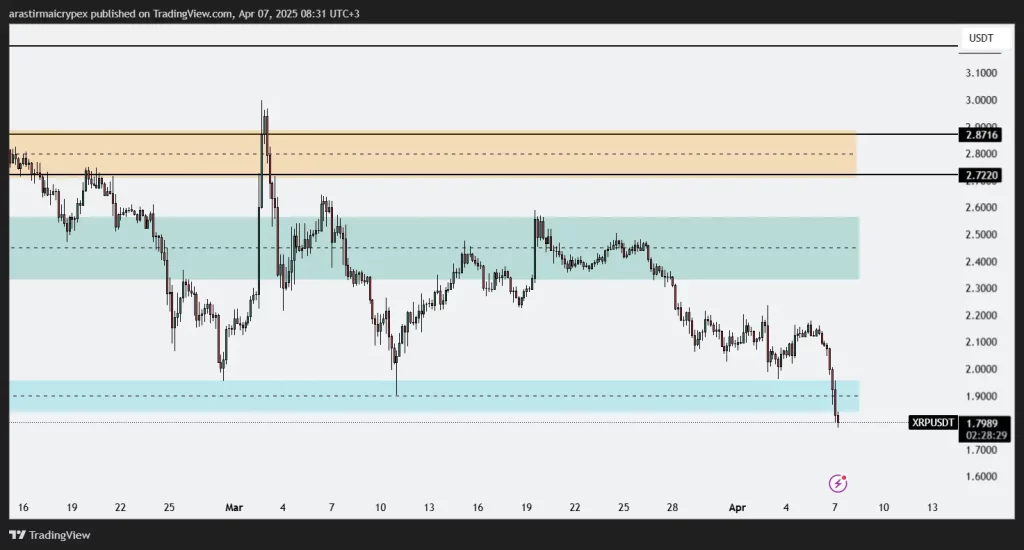
AVALANCHE (AVAX)
AVAX is trading at $15.97 as of the morning hours, losing 0.50% in value. After losing the 17.74 support, AVAX accelerated its decline and fell to the 15.27 level. Although there is a possibility of a short-term reaction purchase here as the price approaches this important support band, the current market structure is still seller-oriented. The 17.74 level is now resistance and the pressure is likely to continue as long as it remains below this level. If 15.27 is broken, deeper support searches may begin.
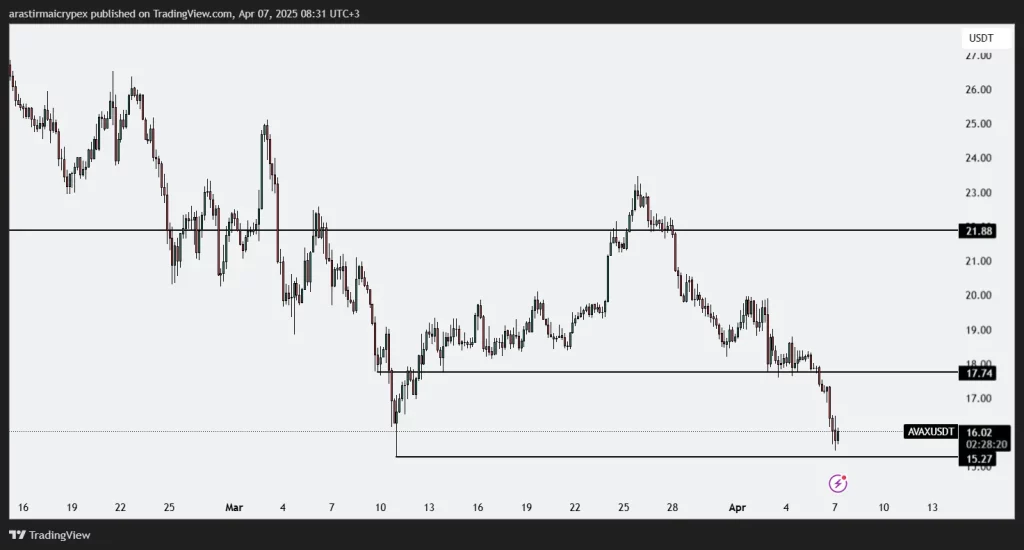
SOLANA (SOL)
SOL is trading at $102.10 levels with a 3.43% loss in value as of the morning hours. The SOL price has broken the 112.00 and 110.24 support levels downward and is under severe selling pressure. This breakout shows that the price indicates a weakness in the market structure and that the downtrend is gaining momentum. The 112 level can now be followed as a strong resistance zone above. Possible reactions towards this level may create an opportunity for sellers again. Considering the current price action, if the decline continues, the next support zone can be followed by the 100 USDT psychological level.
